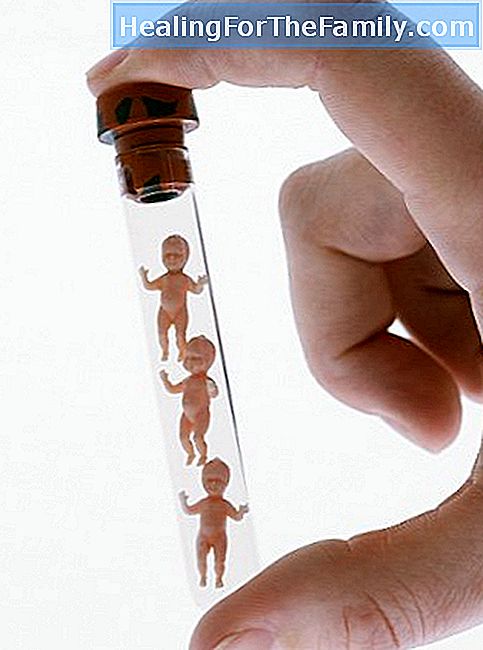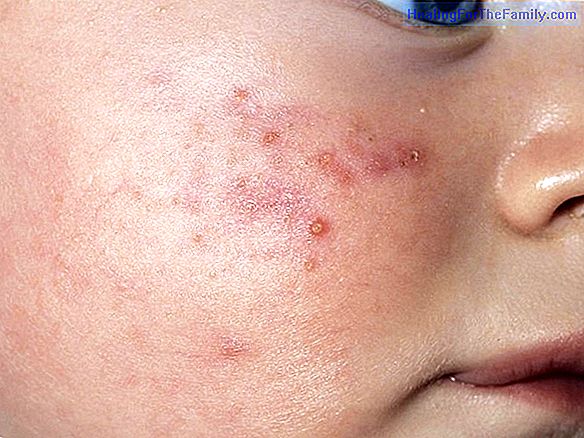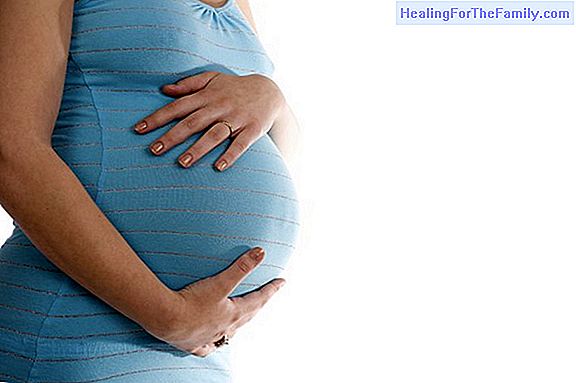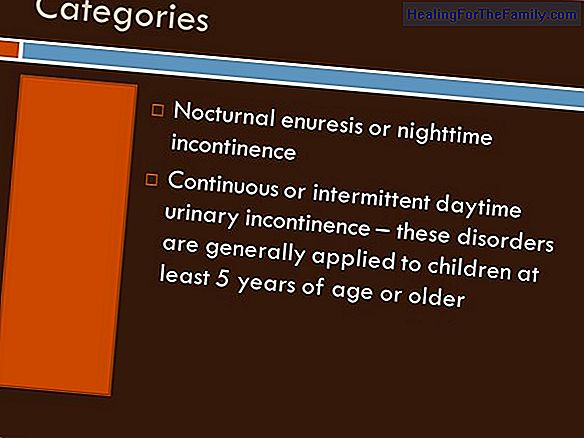Fertility treatments to achieve pregnancy
More and more couples are turning to fertility treatments to have the baby so desired. What types of techniques exist to achieve pregnancy? How is infertility different from infertility? What are the main factors that influence the problems of having children? The doctor Victoria Verdú , gynecology
More and more couples are turning to fertility treatments to have the baby so desired. What types of techniques exist to achieve pregnancy? How is infertility different from infertility? What are the main factors that influence the problems of having children?
The doctor Victoria Verdú, gynecology coordinator of the assisted reproduction clinic Ginefiv and fertility expert of the Spanish Society of Gynecology and Obstetrics (SEGO), in this exclusive interview with GuiaInfantil.com, answers the parents' doubts about the methods and techniques of assisted reproduction.
Causes of infertility

1-How long should a woman wait before going to a fertility expert to achieve pregnancy?
Habitually the waiting time before going to a fertility consultation depends on the maternal age. In women younger than 35 years it is advisable to wait one year. In the case that the woman is older than 35 years, it would be advisable that, after six months of normal sexual relations, try to do the study of sterility, because time is short.
2-What factors influence pregnancy is not achieved?
The factors that usually influence the problems of sterility are given by two parts, on the part of the woman and on the part of the man. In relation to women, the fundamental problem that is usually had is advanced maternal age. It is true that before the age of having the first child was earlier, but now, due to economic, social factors and the incorporation of women to work, the age of first motherhood is dilating a lot. There are also environmental factors that are influencing both women and men, as shown by the quality of the semen sample. But I want to point out that the main problem with which we find ourselves is the age factor, especially in women.
3- What is the difference between infertility and sterility?
Gynecologists differentiate between sterility and infertility. Sterility is when a couple is not able to get a pregnancy, while infertility is when the pregnancy is achieved but there are abortions and the child is not born. In these moments, the concepts of sterility and infertility are mixed and used when a couple has difficulties to have a child.
4- What are the main problems that women face in order to get pregnant?
Age has a fundamental influence on the ability of women to achieve pregnancy. When we are born we already have a number of ovules available in the ovaries, and these ovules are eventually depleted. As of age 35, we know that the quantity of oocytes that we have left is much more diminished. The main problem is that these oocytes are aging and their quality is greatly affected. After 40 years, the probability of having children with their own oocytes is greatly reduced. It is also true that environmental factors can cause this process to accelerate, so it would be very interesting to lead a life as healthy as possible, smoke as little as possible and take care of everything we can.
Age is the fundamental factor, we assume pregnancies at very late ages. Then we find the ability to properly ovulate, patients who have polymicrocystic ovaries. There are also very often women who have endometriosis, and this can affect both the ability to ovulate and the possibility that their tubes, due to inflammatory processes, are altered or obstructed. These are the main problems that we usually encounter.
Fertility treatments

5-What are the treatments to achieve pregnancy?
The most common treatments performed in the assisted reproduction units range from simpler techniques, such as artificial insemination, which simply consists of seeing when the woman is going to ovulate, through an ultrasound, and depositing the semen sample inside the uterine cavity at the most appropriate time and under the best possible conditions, to more advanced assisted reproduction techniques such as in vitro fertilization. Usually what we do is stimulate the ovulation during 8 or 10 days, we extract the ovules, and from that moment, depending on the quality of the semen sample, conventional in vitro fertilization techniques are made, which consist of placing ova and sperm in contact, or more advanced techniques in which, for each ovule, we have to take a good sperm and inject it into the oocyte. These techniques are called sperm microinjection.
6-What are modern differential diagnoses for a woman's fertility?
The diagnosis of sterility has advanced a lot. Until a few years ago, a hormonal evaluation was performed, an ultrasound was done and an evaluation of the quality of the semen sample. But fortunately, at this time, we can go further, make genetic diagnoses, karyotypes, assessments of the quality of the semen sample in which certain parameters are detected that are sometimes influenced by the lifestyle we lead, so that we take care of ourselves The truth is that these diagnoses are helping a lot to that the treatments are more and more delimited, the number of cycles that are made are increasingly shorter, and so we get the pregnancy as soon as possible or a more accurate diagnosis of what is happening to the couple.
7-What is the real reproductive probability of a woman? How can we calculate your ovarian reserve?
The ability of a woman to achieve a pregnancy at a certain time depends on many factors, but it is true that the assessment of the ovarian reserve is very important for us. The way to assess reproductive capacity that we have, the number of ova we have available in the ovaries at a certain time we do from vaginal ultrasound, which have a high resolution and that make us value very well the number of antral follicles that The ovary is available, small spots that are seen by ultrasound, and which give us a very important idea of a woman's reproductive capacity at a certain time.
To this we add the ability to perform hormonal tests, such as the antimullerian hormone, which define us very well what reproductive capacity we have at that moment. They are complementary markers but at this time they help us a lot when deciding one treatment or another or if you have to speed up a little more in time or if you have to go more slowly in the application of assisted reproduction techniques.
8-How is the diagnosis of male fertility made with the new laboratory advances?
The diagnosis of male infertility is currently carried out from traditional parameters such as the performance of a semengram, or more sophisticated techniques such as the sperm capacitation test, in which we are able to recover those sperm with good mobility and good morphology after 24 hours. hours of incubation. We even have diagnostic techniques such as DNA fragmentation of sperm, which helps us a lot when diagnosing the problem of the couple, to see if there are environmental factors that may be influencing that male reproductive capacity. All this makes the treatments more and more effective.
Marisol Nuevo. Copywriter












